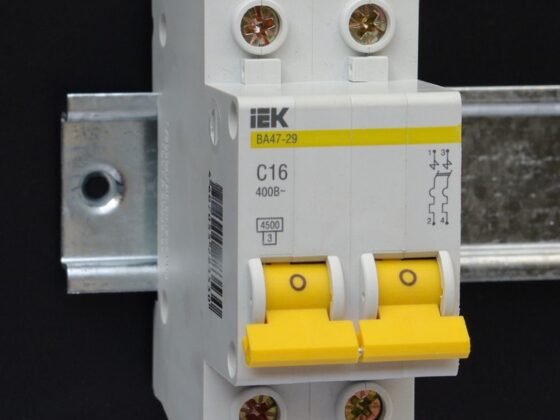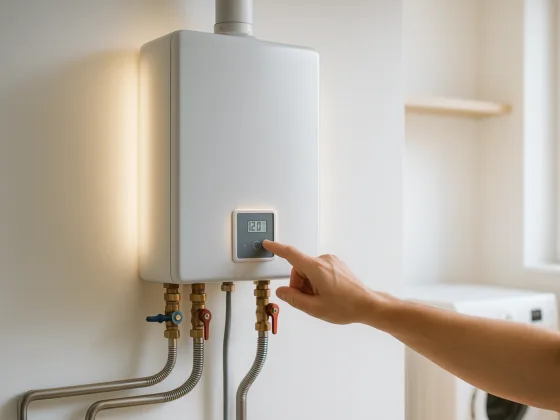Table of Contents Show
Are you tired of returning home to a stuffy house or waking up in the middle of the night because your air conditioner is running too much? Do you aspire to have more control over the temperature and energy use in your home? In that case, replacing your current thermostat with a smart one may be wise.

The most recent advancement in home comfort technology is smart thermostats.
These gadgets employ sophisticated sensors and algorithms to learn your preferences and regulate the temperature of your home automatically so that you can be comfortable while using as little energy as possible.
Here are just a few advantages of switching your air conditioning system over to a smart thermostat.
Energy Savings
Energy savings are one of the smart thermostat’s key advantages. A smart thermostat can help you save energy and money on your utility costs by automatically regulating the temperature of your house in accordance with your schedule and preferences.
Installing a smart thermostat can reduce your annual energy costs by up to $180, according to Energy Star.
Smart thermostats also provide thorough information on how much energy your home is using. Several models provide energy consumption statistics that show you how much energy your air conditioner uses and when it is utilized.
These reports can help find ways to reduce energy usage even further. Some models will even make recommendations for additional energy savings, such as modifying preferred temperature settings or planning maintenance checks.
Read Also:
Increased Comfort
Comparing smart thermostats to conventional ones, more comfort is also provided. A smart thermostat can recognize when you are home and regulate the temperature accordingly thanks to sophisticated sensors and algorithms.
A colder temperature while you sleep or a warmer temperature when you’re away from home is just one of the settings you can select for different times of the day.
Some systems have a “learning mode” feature, which enables the thermostat to gradually learn your preferences and make temperature adjustments according to those choices.
Moreover, the thermostat can detect humidity levels and change the heating or cooling as necessary to make your home’s climate more pleasant. Some versions even have designated zones, which let you independently regulate the temperature in various areas of your house for a more individualized level of comfort.
With these functions, a smart thermostat may assist in making your home more welcoming and cozy for you and your family to enjoy.
Remote Control
Many smart thermostats also come with a companion app, which allows you to control your home’s temperature from anywhere.
Whether you’re at work, on vacation, or just lounging around, you can use your smartphone or tablet to adjust the climate and ensure your home is always comfortable at the temperature of your choosing.
A remote control system can also help identify and troubleshoot problems with your HVAC system quickly.
If you notice a sudden increase in your energy bills or if your home feels less comfortable than usual, use your smart thermostat’s remote control feature to check the temperature and humidity levels.
If you notice any abnormalities, you can adjust the temperature or humidity settings remotely, or contact an HVAC technician for further assistance.
This ability to quickly detect and address issues can help you avoid costly repairs and keep your HVAC system running efficiently.
Improved Air Quality
Some smart thermostats include functions to enhance your home’s air quality in addition to temperature control. For instance, some models can regulate the AC according to the humidity levels in your home to stop the spread of mold and mildew.
Others may be able to tell when your air filter needs to be changed and notify you so you can keep the air in your house clean and hygienic.
When there is a lot of dust, pollen, or pollution, certain smart models are fitted with air quality sensors that can notify the homeowner.
When the sensors identify low air quality, the thermostat makes an automatic change to the HVAC system, such as increasing ventilation or turning on an air purifier.
Those who have allergies or respiratory issues may find this to be especially beneficial. With a smart thermostat, you can have a comfortable temperature in your house as well as clean, healthy air.
Integration with Other Smart Home Devices
Smart locks, security cameras, voice assistants, and other smart home appliances can all be integrated with smart thermostats. One can order a voice assistant like Amazon Alexa or Google Assistant to change the temperature in their house.
Also, you may program unique routines to alter the temperature when you lock or open your smart lock or turn off your air conditioning when you leave the house.
With the ability to integrate your AC system into the rest of your smart home, you will be in complete control of your estate with the click of a button or a “Hey, Siri.” With technology ever-changing, don’t let the times pass you by and be stuck with an old,
Long-Term Cost Savings
While a smart thermostat may cost more upfront than a traditional thermostat, it offers long-term savings through energy efficiency and improved home comfort.
Over time, the energy savings alone can offset the cost of the device, making it a smart investment for your home. As is true for many aspects of home improvement, making the switch to a smart HVAC system is a long-term investment that will build equity and save money.
Upgrading your AC system to a smart thermostat can offer a wide range of benefits, from energy savings to increased comfort and improved air quality.
If you’re considering an upgrade, be sure to research different models and features to find the best option for your home and budget. Enjoy a more comfortable, energy-efficient home with a smart thermostat.









